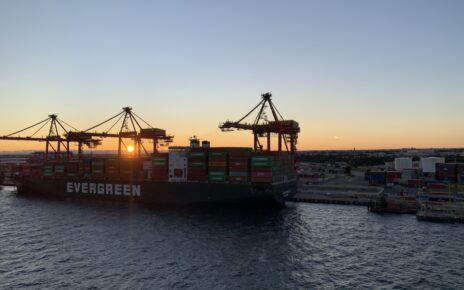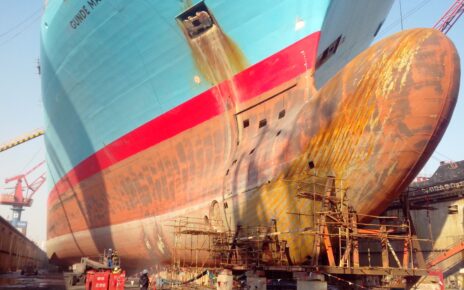“Propeller singing” in merchant ships refers to a phenomenon characterized by the production of a distinctive noise or vibration as a ship’s propeller rotates underwater. This sound can range from a low-frequency hum to a high-pitched noise and is typically caused by the interaction between the propeller blades and the surrounding water.
propeller singing in merchant ships
Here are some key points to understand about propeller singing in merchant ships:
Cavitation: The primary cause of propeller singing is cavitation. Cavitation occurs when the pressure of water drops to a level where it can no longer support the formation of vapor bubbles. As the propeller blades rotate and generate hydrodynamic forces, they create areas of low pressure, causing small vapor-filled cavities to form. When these cavities collapse, they produce pressure pulses and generate sound waves.
Frequency Range: The frequency of the sound produced during propeller singing can vary widely, depending on factors such as the ship’s speed, the design of the propeller, and the water conditions. It can range from infrasound (below the range of human hearing) to audible frequencies.
Vibration and Noise: Propeller singing can manifest as both vibration and noise. The vibrations can be transmitted through the ship’s structure and may be felt by the crew. The noise can sometimes be heard both inside and outside the vessel, potentially causing discomfort for the crew and passengers.
Impact on Efficiency: While propeller singing is primarily a noise and vibration issue, it can also have implications for the efficiency of the propulsion system. The energy expended on cavitation reduces the propeller’s overall efficiency, which can impact fuel consumption and overall performance.
Mitigation: To mitigate propeller singing, ship designers and operators may employ various strategies, including modifying the shape and design of the propeller blades, optimizing the propulsion system, and adjusting the ship’s speed to minimize cavitation. Additionally, the use of underwater acoustic coatings or insulation materials can help reduce the transmission of sound and vibration to the ship’s interior.
Monitoring and Maintenance: Monitoring and maintenance of the propulsion system are crucial to addressing and preventing propeller singing. Regular inspections of the propeller and associated components, as well as ongoing monitoring of vibrations and noise, can help detect and address issues early.
Environmental Considerations: Excessive cavitation and propeller noise can also have environmental implications. Some regulations and guidelines, such as those established by the International Maritime Organization (IMO), aim to limit underwater noise from ships to protect marine ecosystems and marine life, particularly in sensitive areas.
In summary, propeller singing in merchant ships is a phenomenon driven by cavitation, resulting in noise and vibration during propulsion. It can impact the comfort of the crew and passengers, affect propulsion efficiency, and have environmental implications. Ship designers, operators, and regulators work to mitigate these effects through various means, including optimizing propeller design and adhering to environmental regulations.



